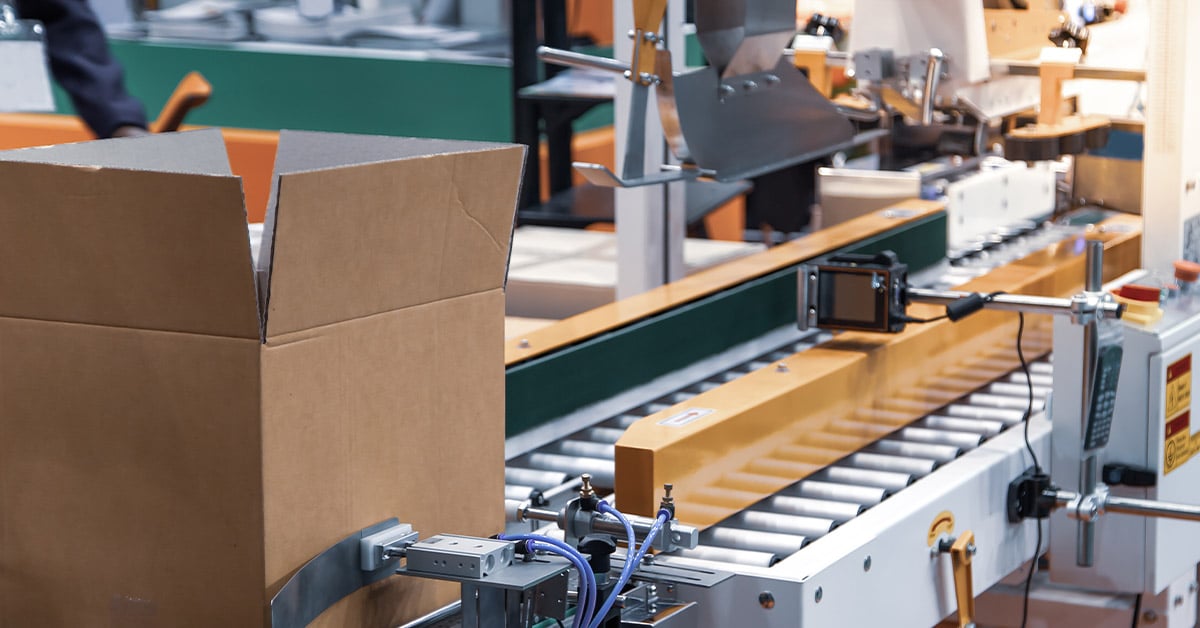In any modern manufacturing company, there’s an overwhelming need to be efficient. This involves controlling your process, having full transparency to your operation and maximizing your output. To stay ahead of your competitors, you need to introduce new technologies and methods that further maximize your efficiency. This is where track and trace systems come in.
In this guide, our manufacturing experts will answer the question, “What is track and trace?”. We’ll teach you how it works, provide examples and show you how different industries use a track and trace system.
What is track and trace?
A manufacturing track and trace system allows businesses to follow the life cycle of individual products or components throughout the supply chain. This track and trace technology uses identifiers such as barcodes or RFID tags, in tandem with data collection and management software, to capture, store and analyze the movement and status of items.
What is being tracked? It could be anything that your company makes and sells — from simple spatulas to complicated semiconductor parts.
Track and trace systems are essential tools that help manufacturers identify bottlenecks, control inventory, adhere to regulations and potentially avoid costly recalls. Giving a clear visibility of goods from production to the end customer is an integral part of a robust supply chain management system.
How does a track and trace system work?
A track and trace system operates through a combination of technologies that identify, capture and store information at every stage of the manufacturing process.
- Identification: Each product or component is assigned a unique identifier, typically a barcode or RFID tag.
- Data capture: Scanners or readers are used to capture the identifier information at various stages in the manufacturing process.
- Data storage and management: The captured data is then stored in a centralized database or cloud-based system. This data includes details about the product’s origin, movement through the production line and ultimate destination.
- Analysis and reporting: Manufacturers can use software tools to analyze the data and generate insights about product movement, inventory management, quality control and other key metrics. The system can alert you and your team to ensure timely corrective actions.
Benefits of track and trace
Track and trace systems are commonplace in modern manufacturing facilities. We hinted at a few reasons why, but here are some of the big benefits of track and trace systems.
Improved efficiency
Track and trace systems allow manufacturers to automate their inventory management, leading to more accurate stock control and reduced human error. This automation also accelerates the processing time, enhancing the overall efficiency of the manufacturing process.
Regulatory compliance
Certain industries, such as pharmaceuticals and food and beverage, are subject to strict regulatory requirements. Track and trace technology can help manufacturers adhere to these regulations by providing a clear record of product lineage (paper trail) and ensuring product authenticity. This is especially helpful during audits.
Enhanced customer satisfaction
By providing transparency in the product journey, track and trace systems can increase customer trust. In case of a product recall, the system enables quick action, thereby reducing potential damage to the company’s reputation.
Predictive maintenance
Predictive analytics in manufacturing offer real-time visibility into equipment performance, allowing a track and trace system to predict potential equipment failures. This leads to timely maintenance, preventing costly unplanned downtime and keeping production lines running smoothly.
How to implement a track and trace system
Implementation of a track and trace system involves several steps.
- Outline your goals: Identify the specific problem you are looking to solve, whether it’s improving supply chain track and trace transparency, adhering to regulatory compliance or improving maintenance efficiency.
- Choose the right technology: From barcodes to RFID tags, choose the identifier technology that best fits your needs and industry standards. You’ll need to understand how each technology works in conjunction with your products.
- Select a robust software platform: A system that can handle high volumes of data and provide real-time insights will be crucial.
- Partner with experts: This journey is complex and having the right partner — like ATS, with a proven track record in maintenance solutions — can help smooth the process.
Best practices in track and trace systems
Implementing a track and trace system in a manufacturing setting requires strategic planning, careful execution and continuous improvement. Here are some best practices for manufacturers considering such a system.
Start with a clear vision and goals
Before implementing a track and trace system, it’s important to define what you hope to achieve. This may involve improving process efficiency, ensuring compliance with industry regulations, enhancing customer satisfaction or all of the above.
Clear goals will guide your selection of the right technology and partner for implementation.
Prioritize data quality
Track and trace systems rely on accurate, high-quality data. Regular audits and data validation processes are essential to ensure the reliability of the system.
Choose scalable technology
Your track and trace system should be able to grow with your business. Choosing scalable technology will ensure the system can handle an increasing number of product SKUs and higher volumes of data over time.
Develop a contingency plan
No system is infallible. It’s essential to have a contingency plan in place to address potential failures or system breakdowns. This might include manual backup systems or alternative operational procedures.
Continuous improvement
The track and trace system is not a “set it and forget it” solution. Regular reviews and improvements are key to ensuring the system continues to deliver maximum value.
Examples of track and trace manufaturing

This system is used across countless industries. Here are a few specific examples of track and trace manufacturing in a few industries.
Pharmaceutical
The pharmaceutical and medical devices industry has stringent regulatory requirements, making track and trace vital for ensuring drug safety, combating counterfeit medicines and maintaining compliance.
Food and beverage
In a food manufacturing plant, track and trace systems ensure transparency from farm to table, safeguarding food safety and increasing consumer confidence.
Automotive
The automotive industry uses track and trace to control the flow of parts, track component history and enable predictive maintenance, thereby ensuring consistent production and quality.
Aerospace
In the aerospace industry, track and trace systems are used to monitor the lifecycle of critical components, ensuring the safety and efficiency of aircraft. They also assist with maintenance schedules and regulatory compliance.
Chemical industry
For the chemical industry, a track and trace system helps to ensure safe handling and transportation of raw chemicals, meet regulatory requirements and improve customer trust by providing visibility into the product lifecycle.
Summing up
Understanding track and trace systems is the first step to integrating them into your manufacturing processes. Doing so can yield significant benefits —improving efficiency, ensuring regulatory compliance, enhancing customer satisfaction, enabling predictive maintenance and adding value across your supply chain.
At ATS, we provide best-in-class standards and processes across industrial maintenance, parts and technology to increase your plant’s productivity and supply chain efficiency. Get started today!


